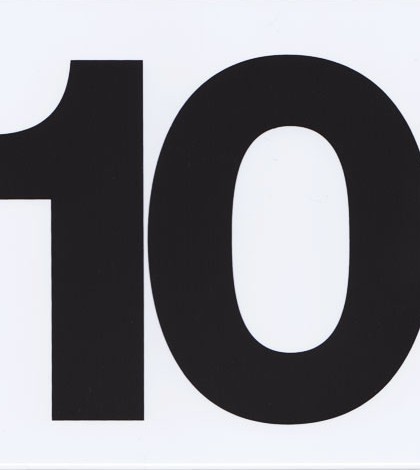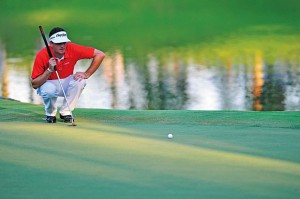Opinion & Analysis
PGA Tour: 10 things to watch for in 2013

Come-from-behind victories. Sunday meltdowns. Thrilling major championships. Dominance. An indescribable Ryder Cup.
To many golf fans, 2012 brought a whole new level of excitement to the game. The unpredictability and element of surprise hopefully also attracted new fans to the sport. Either way, everyone who followed professional golf this year had something draw them in.
The 2013 season is on the horizon, teeing off Jan. 4 in Kapalua, and there are tons of storylines heading into the new year. Predicting outcomes for the season ahead is near impossible, but it’s always fun to speculate on a broader range. So, what should we look forward to in 2013 in professional golf? The topics are wide and the lists are long, but here are 10 things to watch for in the upcoming year.
Structural Shake Up
In 2013, the PGA Tour will embark upon its newest schedule set-up which, in effect, alters the Tour’s structure as a whole. The 2013 season will conclude with the final event of the PGA Tour Playoffs for the FedExCup , the Tour Championship in Atlanta on Sept. 22. Then, three weeks later, the 2014 season will begin with the Frys.com Open, the first of the Fall Series events.
Of course, the scheduling change to the Tour also leads to changes for the Web.com Tour and Qualifying School. The Web.com Tour will now be the primary feeder for the PGA Tour, while Q-School will send its top finishers on to the Web.com Tour.
Fifty PGA Tour cards will be awarded to Web.com Tour players: 25 based on the final money list and a final 25 cards based on cumulative earnings from four Finals events. The Web.com’s Finals events will coincide with the FedExCup, with the exception of the last event, which will take place the week after the Tour Championship.
The newly formed PGA Tour Canada Tour, as well as the PGA Tour Latinoamerica Tour, will add additional playing avenues to the equation for professional golfers. The top-5 finishers on both tours gain direct access to the Web.com Tour. Also, Nos. 6 through 10 on the PGA Tour Canada will be exempt into the finals of the Web.com Tour Q-School.
Throwing the Anchor
In late November, the USGA and R&A proposed a rule change to prohibit anchoring the club during the stroke that will likely be approved this spring and go into effect in 2016. With the announcement, a range of storylines surround this topic for the upcoming year. At what point will players make the switch? Will fans support players who decide to continue anchoring? Will the PGA Tour move quickly and make a local rule, eliminating the three-year gap before the rule is changed. Will new techniques develop for putting woes?
Webb Simpson has openly admitted practicing at home with a regular putter and will put it in play when he’s comfortable. Adam Scott has already been seen without his typical flat stick. Keegan Bradley plans to keep his anchored stroke in play and has the option to do so despite already getting flack from a fan at the World Challenge.
Meanwhile, equipment makers such as Odyssey are already marketing forearm-anchored putters, giving belly-length putters a second wind.
McIlroy’s Move
As World No. 1 Rory McIlroy departs Titleist for Nike in 2013, his ability to adapt and grow comfortable with his new clubs will be closely watched. Some people downplay the move, saying equipment is similar nowadays. Others, such as Nick Faldo and Tiger Woods, suggest that the change could put a lot on the line and take a lengthy amount of time to get comfortable with.
Whether it is an easy or hard transition for McIlroy, we’ll most likely see his first competitive round with the swooshes in his bag at the HSBC Abu Dhabi Championship, Jan. 17-20. From there, he’ll have lofty-as-ever expectations to live up to, after taking 2012’s PGA Tour Player of the Year honors.
Major Slump
Another majorless year has come and gone for Tiger Woods. And while Woods went oh-fer in 2012, he had his chances at getting closer to Jack Nicklaus’ all-time mark of 18 major championships.
Woods was tied for the 36-hole lead at both the U.S. Open and the PGA Championship, and sat in third place through 36 holes at the British Open. However, a weekend scoring average of 72.83 in those three majors knocked Tiger from contention in each event. His best major finish was a tie for third at Royal Lytham & St. Annes where he still sat four shots back of champion Ernie Els.
In 2013, Woods’ best chances at majors will come early. April’s Masters present a great opportunity for Woods due to his historic prowess at Augusta National, but he hasn’t won a Green Jacket since 2005. He has never played Marion Golf Club, the 2013 U.S. Open venue, and doesn’t exactly have fond memories at this year’s British Open and PGA Championship venues. He plummeted out of contention after a third-round 81 at the 2002 British Open at Muirfield and never shot lower than 72 at Oak Hill in 2003’s PGA Championship.
Brandt Snedeker vs. FedEx Cup Curse
Ironically, each of the first five winners of the FedEx Cup have failed to return to the Tour Championship the following year. In 2013, Brandt Snedeker will look to snap that streak and be one of the 30 players who take on Atlanta’s East Lake Country Club for the $10 million FedEx Cup bonus.
It seemed as if Bill Haas would end the trend in 2012, but Haas shot a final-round 78 in the BMW Championship at Crooked Stick. Haas finished 45th in the 70-man field and dropped to 32nd in the FedEx Cup points standings. Haas was positioned to move on, but he bogeyed four of the last five holes, leaving him outside the 30-man Tour Championship field.
If Snedeker wants another shot at the bonus, he’ll have to finish in the top 125 of the points list, then successfully advance on different courses than he did this year. The Barclays moves back to Liberty National in Jersey City, N.J., opening the four-event series. The Deutsche Bank Championship remains at TPC Boston in Norton, Mass., as the second event, while the third leg is the BMW Championship at Conway Farms in Lake Forest, Ill.
President’s Cup
Jack Nicklaus’ Muirfield Village will be in the spotlight on two occasions during the upcoming year, as the course will host the 2013 Presidents Cup in addition to its yearly Memorial tournament. Fred Couples and Nick Price will captain their respective teams in the 10th playing of the Presidents Cup, which takes place Oct. 1-6. It will be Couples’ third-straight U.S. captaincy, while Price is getting his first attempt with the International squad.
The U.S. has dominated the cup, winning seven of the nine previous meetings. The International’s sole victory came in 1998 by a 20.5 to 11.5 margin, while the squads tied in 2003. The Presidents Cup may not ignite passion in ways the Ryder Cup does, but it has gained momentum through the years as an exciting and entertaining event.
It is fitting that the event will take place at Nicklaus’ Muirfield Village, given the history behind both the man and the course. Nicklaus has captained the U.S. Presidents Cup team on four occasions (1998, 2003, 2005, 2007) and Muirfield Village has hosted the Memorial Tournament annually since 1976. The venue will become the first club in the world to host the Presidents Cup, Ryder Cup (1987) and Solheim Cup (1998).
Talented Teens
Teens took the golf world’s spotlight on several occasions in 2012, especially at the U.S. Open at Olympic Club. Fourteen-year-old Andy Zhang first made news as he became the youngest to compete in the USGA event. Then, 17-year-old Beau Hossler stole the show the first three days, even holding a brief solo lead Friday afternoon at 2-under-par. Unfortunately, a final-round 76 dropped Hossler from contention and the claim of low amateur. That distinction went to 19-year-old Jordan Spieth, who played the weekend in 1-under-par (69-70) and turned professional Dec. 14.
On the ladies’ side, 15-year-old Lydia Ko became the youngest to ever win an LPGA Tour event, claiming the CN Canadian Women’s Open by three shots over Inbee Park. Ko erased Lexi Thompson’s youngest age record — Thompson was 16 when she won the 2011 at the Navistar LPGA Classic in Alabama.
We already know of one teen who will surely be in the golf news in 2013: Guang Tianlang of China. The 14-year-old won the Asia-Pacific Championship this fall to qualify for the Masters. With the youthful talent pool of golf, chances are good that many more teens will make golf headlines in the year ahead.
Furyk’s Bounce Back
Jim Furyk arguably endured a career’s worth of heartache in one season alone. The U.S. Open, WGC-Bridgestone and Ryder Cup certainly left the deepest gashes, while close calls at Transitions, Tour Championship and the McGladrey Classic were added to his list of “what ifs.”
Furyk still has years of PGA Tour experience to use as motivation and can look no further than the 2009 season for similarities. That season, Furyk had five top-five finishes before jumping back into the winner’s circle in 2010.
Rookie Impact
PGA Tour rookies have performed quite well over the past two years. In 2011, rookies claimed seven victories including major championships from Charl Schwartzel (Masters) and Keegan Bradley (PGA Championship). Four rookies — John Huh, Jonas Blixt, Charlie Beljan and Ted Potter, Jr. – earned victories on the PGA Tour in 2012.
The 2013 class, made up of Web.com money leaders and graduates of Q-School, features a variety of heralded players. Luke Guthrie, Russell Henley, Ben Kohles, Morgan Hoffmann, Scott Langley and Patrick Reed, to name a few, have gained attention in the professional realms already and look to excel during their first year on Tour. There are also many experienced European Tour players such as Nicolas Colsaerts, Ross Fisher and Martin Kaymer who will each take up PGA Tour membership for the first time next year.
Golf on the Global Stage
Golf’s worldwide popularity has been on an upward trend over the last decade or so, and we are now seeing the effects of it being a global sport. More and more young, elite players are beginning to display their talents on the world stage and one could expect that to continue with golf being part of the 2016 Olympics in Rio.
The PGA Tour’s support for the global game will step up a notch during the latter part of 2013, as three of the first six events for the 2013-14 season will take place outside the United States. Most notably, the CIMB Classic in Malaysia and the WGC-HSBC Champions in China will both be official Tour events for the first time. While each of those events have drawn the biggest names, entrants are also qualifiers from the Asian Tour or hold other special distinctions.
Additionally, the success of young talents will continue to push the game to new heights. It seems as if Ryo Ishikawa has been in the spotlight for years and years, yet he’s still just 21 years old. With other young players such as Andy Zhang, Lydia Ko and Guang Tianlang being successful on the world stage, we can only expect more to come in the future.
Click here for more discussion in the “Tour Talk” forum.
- LIKE0
- LEGIT0
- WOW0
- LOL0
- IDHT0
- FLOP0
- OB0
- SHANK0
Courses
The BEST hidden gem links courses in the UK & Ireland

Another Open Championship has come and gone and links golf was once again in the spotlight at Royal Troon! For those who have never played a links course (like myself), it sparks a desire to fly across the pond to experience it for ourselves. While a golf trip to the UK or Ireland is a bucket-list item, most people look to play the big-name courses (Old Course, Carnoustie, Lahinch, Royal Portrush,etc.), but don’t realize they can get a similar experience by traveling to some of the lesser known destinations where you will find some of the purest links courses in the world. With this in mind, here are our picks for the best hidden gem links courses you should play when you book a UK or Ireland trip:
IRELAND
We start our list off with a 36-hole club in the Northwest of Ireland, a remote area of the Emerald Isle that is known for its rugged terrain and spectacular scenery. Bordering the Wild Atlantic Way, Ballyliffin is relatively newer (est. 1947) but offers golfers one of the purest links golf experiences anywhere in the country. While not easy to get to, the two courses onsite (Old and Glashedy) are well worth the travel with large dunes shaping the fairways that overlook the North Atlantic Ocean and a myriad of pot bunkers everywhere you look. Even Rory McIlroy believes that “Ballyliffin’s two courses are a must play on any golf trip to Ireland.” and we tend to agree.

How to incorporate Ballyliffin in a golf trip:
Stay:Ballyliffin Lodge, Hotel & Spa
Play: Old Links & Glashedy Links at Ballyliffin, and Old Tom Morris Links or Sandy Hills Course at Rosapenna
The next course on the list is in the Sligo area of the Northwest where we find Enniscrone, roughly 3 hours (by car) south of Ballyliffin. Like many links courses, Enniscrone was originally a 9-hole course when it was opened in 1918 before an additional 9 holes were added 12 years later. In 1970, Eddie Hackett was tasked with redesigning the course to help the two 9-hole courses flow effortlessly into one 18 hole layout. A big feature that can be seen throughout your round here are the towering dunes that shape the course and protect some holes from the ocean winds. Built right out of the landscape of the dunes bordering the sea, the course has a lot of undulation in the fairways and greens with some elevated tee boxes providing unreal views of the natural land.

How to incorporate Enniscrone in a golf trip:
Stay: The Glasshouse Hotel, Sligo
Play: Enniscrone, County Sligo, and Donegal
Additional Courses: Strandhill, Carne, and Narin & Portnoo
Another fantastic gem on the Northwest coast of Ireland is the NEW (2020) St. Patricks Links at Rosapenna Hotel & Golf Links. The land was purchased back in 2012 which was already a 36-hole facility and Tom Doak was brought in to reimagine the property to the layout it currently is today. Large sand dunes shape the front 9 holes before heading back through some more subtle dunes back towards the clubhouse. The course offers elevation changes with some tee boxes sitting atop the dunes offering spectacular views of Sheephaven Bay and beyond. With two other courses and a fantastic hotel on property, this destination is all you could ever ask for.

How to incorporate St. Patricks in a golf trip:
Stay: Rosapenna Hotel & Golf Links
Play: St. Patrick’s Links, Sandy Hills Course , and Old Tom Morris Links (all at Rosapenna)
For our last hidden gem in Ireland, we head 30 minutes north of the country’s capital, Dublin, to The Island Club. Built along rugged terrain and the highest sand dunes on the east coast of Ireland, the Island Club is situated on a small peninsula surrounded by water on three sides providing a difficult challenge, especially with the winds. Founded in 1890, the Island Club continues to be ranked in the Top 10 courses in Ireland and has held some Amateur Championships and Open Championship Regional Qualifiers.

How to incorporate The Island Club in a golf trip:
Stay: The Grand Hotel, Malahide
Play: Island Club, Portmarnock Old, County Louth
Additional Courses: Royal Dublin
SCOTLAND
Located along “Scotland’s Golf Coast” of East Lothian is where we find the classic links of Dunbar. Opened in 1856 with only 15 holes, this is one of the many courses in Scotland that Old Tom Morris had a hand in crafting. Laid out along rocky and rocky terrain, the course is only 6500 yards long and while not long by modern standards, the course requires shot making and proper club selection to play well. The course has held many national and international tournaments including a few rounds of The Open Final Qualifying.

How to incorporate Dunbar in a golf trip:
Stay: No. 12 Hotel & Bistro
Play: Dunbar, Gullane (No.1), North Berwick
Additional Courses: Craigielaw, Kilspindie, Gullane (No.2, No. 3)
The next course on our list brings us to the Scottish Highlands, one of the lesser traveled destinations in Scotland, but still home to some amazing links courses including Cruden Bay! Located 25 miles north of Aberdeen on the east coast of the Highlands, Cruden Bay was opened in 1899, although history would indicate golf has been played at the property since 1791. Another Old Tom Morris design, the course is consistently ranked in the Top 25 of courses in Scotland and it is easy to see why. At only 6600 yards, it is relatively short, but the natural lay of the land provides elevation changes, punchbowl greens, and some large, 3-story high dunes that offer spectacular views for a classic links experience.

How to incorporate Cruden Bay in a golf trip:
Stay: Leonardo Hotel Aberdeen
Play: Cruden Bay, Trump International Links, Royal Aberdeen
Additional Courses: Murcar
We head back to the Highlands just north of Dornoch to where we find Brora Golf Club. Similar to a lot of links courses, Brora opened as only 9 holes in 1891, but that only lasted for 9 years before an additional 9 was added in 1900 before a James Braid redesign in 1924. At just over 6200 yards, this is one of those courses that will make you appreciate links golf in Scotland with cattle and sheep roaming freely around the property. The course is a typical links routing with the front 9 going out and the back 9 coming back to the clubhouse. The defense of the course is the wind (naturally), but the greens are relatively small with pot bunkers standing guard to catch errant approach shots.

How to incorporate Brora in a golf trip:
Stay: Royal Golf Hotel, Dornoch
Play: Brora, Royal Dornoch – Struie & Championship
Additional Courses: Golspie, Tain
Staying in the Scottish Highlands, the last Scotland links gem on the list is just outside of Inverness at The Nairn Golf Club. The narrow fairways are fast and firm leading to decent sized, tricky greens that roll true, but are guarded by devious pot bunkers. The first seven holes play right along the water and with not a ton of elevation changes, spectacular views across the Moray Firth can be seen throughout the course. With fantastic course conditions throughout the season, this fantastic links is an absolute must-play when visiting the Highlands.

How to incorporate Nairn in a golf trip:
Stay: Kingsmills Hotel, Inverness
Play: Nairn, Castle Stuart (Cabot Highlands), Fortrose & Rosemarkie
Additional Courses: Nairn Dunbar, Moray

Golfbreaks by PGA TOUR highly recommends you start planning your trip across the pond AT LEAST 12-18 months in advance in order to secure tee times and hotel rooms over the dates you desire. With more and more people taking up the game of golf, these bucket list trips have already become extremely popular and will continue to gain interest so make sure to start planning early!
RELATED: Open Championship courses you can play (and when the best time to book is)
Editor’s note: This article is presented in partnership with Golfbreaks. When you make a purchase through links in this article, GolfWRX may earn an affiliate commission.
- LIKE21
- LEGIT1
- WOW1
- LOL1
- IDHT0
- FLOP3
- OB0
- SHANK4
Courses
Open Championship courses you can play (and when the best time to book is)

The final major of 2024 is nearly here as the top golfers head to Scotland’s southwestern coast to battle for the claret jug at Royal Troon. Golf’s original major dates all the way back to 1860 and has been played at 14 different courses throughout the United Kingdom (yes, this includes Northern Ireland) providing countless memories including celebrations, heartbreak, and unique moments that will never be forgotten (looking at you Jordan Spieth).
With The Open teeing off less than a week from now, we wanted to highlight some of The Open Championship’s finest links courses that should play when you make the journey to golf’s homeland:
- Old Course at St. Andrews
- Carnoustie
- Muirfield
- Royal Portrush
- Royal Troon
- Royal Birkdale
- Royal St George’s
Old Course at St. Andrews

Do we even need to say anything else? The “Home of Golf”, host of 30 Open Championships, the most coveted tee time in the WORLD, there are a million reasons to have St. Andrews on your links golf bucket list. From the double greens, to the tee shot over the Old Course Hotel, to the walk up 18th fairway with the town buildings framing a picturesque scene (especially at dusk), every golfer should make the voyage to St Andrews at least once in their life.

Carnoustie

Carnoustie – Championship Course
Roughly 25 miles north of St. Andrews lies the devious links of Carnoustie, often recognized by the large white Carnoustie Golf Hotel as the backdrop of the 18th green. While the course has only hosted The Open 8 times, it is considered to be one of the hardest layouts in The Open rota (just ask Jean Van de Velde) although not that long, playing just under 7000 yards from the tips.
Muirfield

Located right next to this week’s host of Scottish Open (The Renaissance Club), this fantastic links layout has hosted the prestigious Championship 16 times since 1892. The narrow fairways and penal rough requires precise shots off the tee while avoiding the devious pot bunkers is a must. The course is set away from the coastline so you won’t get the sweeping ocean views, but a round at Muirfield is one the premier tee times in all of Scotland (so make sure you book early – 12-18 months at least).
Royal Portrush

A view of the new 572 yards par 5, seventh hole designed by Martin Ebert on the Dunluce Course at Royal Portrush Golf Club the host club for the 2019 Open Championship in Portrush, Northern Ireland. © 2018 Rob Durston
Our next stop brings us across the Irish Sea to the northern coast of Northern Ireland and the popular Royal Portrush. Having hosted The Open only twice in its illustrious history, Royal Portrush is a golfer’s dream with 36 holes of pure links golf set against a gorgeous backdrop of the ocean and cliffs. The Open Championship will return to Portrush in 2025 and YOU CAN BE THERE to watch it all in person!
Royal Troon

TROON – JULY 26: General view of the ‘Postage Stamp’ par 3, 8th hole taken during a photoshoot held on July 26, 2003 at the Royal Troon Golf Club, venue for the 2004 Open Championships, in Troon, Scotland. (Photo by David Cannon/Getty Images)
The host of this year’s Open Championship, Royal Troon is home to one of the best par-3 holes in all of golf, “The Postage Stamp.” A downhill 125-yard tee shot to a minuscule green surrounded by bunkers on all sides makes it one of the more challenging holes. Another hole that adds to the challenge is the 601-yard par 5 that used to be the longest golf hole in Open Championship history. This year will be the 10th Open Championship held at Royal Troon, the first since 2016 when Mickelson and Stenson had a battle for the ages in the final round.
Royal Birkdale

For the next course on the list, we have to head down to the northwest coast of England just outside of Liverpool. Consistently ranked in the Top 10 courses in all the UK, this 10-time host of The Open has hosted many other prestigious events such as Ryder Cups, Women’s Opens, and more! The course is laid out with fairways running through flat-bottomed valleys surrounded by high dunes which provide many blind shots throughout the course. The Open returns to Royal Birkdale in 2026 so it won’t be long before it is back in the spotlight.
Royal St. George’s

For the final course on our list, we are staying in England, but heading across to the southeastern side of the country to Kent. Royal St. George’s is 4th on the list of most Open Championships hosted with 15 (1 behind Muirfield) the most recent being Collin Morikawa’s victory in 2021. RSG is the only active course on The Open rota in this part of the UK, but two former hosts (Prince’s and Royal Cinque Ports) are within 3 miles of the property. The expansive course is laid out with holes separated by dunes with heavy rough, undulating fairways, and deep pot bunkers to challenge your game. While it may not be mentioned in the discussions of St. Andrews, Carnoustie, and the like, Royal St. George’s is still a Championship layout that is worth the trip across the pond.

With these big-name courses in such high demand, it is important to note that if you want to play them, you need to start planning your trip early. Golfbreaks by PGA TOUR, the world’s #1 rated golf tour operator, suggests planning and booking your trip at least 12-18 months in advance in order to secure a tee time at the courses you want. The UK & Ireland specialists at Golfbreaks by PGA TOUR have the knowledge to help tailor the perfect golf trip for your group so you can play big-name courses and hidden gems you might not have heard of. If you’re ready to start planning your bucket list trip across the pond, make life easier and go with Golfbreaks by PGA TOUR.
Editor’s note: This article is presented in partnership with Golfbreaks. When you make a purchase through links in this article, GolfWRX may earn an affiliate commission.
- LIKE12
- LEGIT1
- WOW0
- LOL0
- IDHT0
- FLOP0
- OB0
- SHANK0
Courses
Ryder Cup 2025: Crossing to Bethpage – New York State Park golf, Part 1

The 2025 Ryder Cup matches will be held over the sprawling, bruising, Long Island acreage known as Bethpage Black State Park Golf Course. The course has hosted multiple national championships, most recently the 2019 PGA Championship. In September 2025, Bethpage Black will welcome teams from the USA and Europe to contest the 45th Ryder Cup matches. Team Europe, the defending champions, will be led again by captain Luke Donald. The U.S. PGA has not yet announced the name of its leader, yet all sources and speculations point to a 15-time major champion and an eight-time participant in the biennial event.
Bethpage Black will join Oak Hill Country Club in Rochester (1995) as the second Empire State course to host the event. The Ryder Cup matches were played in the metropolitan New York area once before, in 1935 at the Ridgewood Club, in Paramus, New Jersey. It’s fair to say that metro NYC is due to host this world-stage, golf event. I can’t wait. The USA’s loss to Europe in 2023 adds to the considerable drama.
What makes Bethpage Black an outlier in the world of championship golf, is its mere existence. It’s a state park golf course, one of five on property, each with a colorful name. The Red, Green, Blue, and Yellow join big brother Black as outstanding tests of golf in Farmingdale. Of the five, only the Green was not originally built as a state course. The Lenox Hills Country Club, designed by Devereux Emmet, opened in 1923. By 1932, the club had closed and the land had become property of the state. Its birth date made the Green the oldest of the five courses. New York State began to build on a series of adjacent parcels, guided by the hands of Alber “A.W.” Tillinghast, Joseph Burbeck, and Alfred Tull. The Yellow course, built entirely by Tull, was the last of the five to open.
State park courses just don’t hold major championships. Private clubs and elite resorts are the typical sites that receive the nod from the world’s golf bodies. It’s a testament to the lovers of Bethpage, the New York state government, and the PGA of America (among others) that Bethpage is as good as it is, and that it continues to improve. It’s a fitting site for the 2025 Ryder Cup matches, but the 2025 Ryder Cup matches need a beginning to their story. I’ll do my best to provide it.
- Bethpage Yellow Golf Course
- Bethpage Black Golf Course
- Bethpage Red Golf Course
- Bethpage Yellow Golf Course
- Bethpage Black Golf Course
- Bethpage Green Golf Course
- Bethpage Blue Golf Course
- Bethpage Red and Black Golf Courses
- Bethpage Green Golf Course
- Bethpage Red Golf Course
The quintet of courses near Bethpage, New York, is just the beginning of the New York state park golf course system. 19 parks in total offer golf from the tip of Long Island, to the shores of Lake Ontario, through the Catskill mountains, to my home town. I’m a Western New York guy. The Buffalo area has been my home for most of my 58 years on the golf ball known as Earth. I live two miles from the westernmost, state park golf course: Beaver Island. The Beav, as everyone calls it, was designed by William Harries. It opened the year I was born, which means that it is close to 60 years old! Unlike the Bethpage property, where topography is king, the Beav is a flat course, albeit full of enough interest to bring you back for more.
As I considered the magnitude of the state park system, I realized that golfers who frequent those 19 state parks can point to their home course and say, “You know, the Ryder Cup will be at a state park course next year.” I started to count on my fingers, the number of state park courses I had played: Beaver Island, Green Lakes (Syracuse), James Baird (Poughkeepsie), and the five at Bethpage, I realized that I had played eight of the 23 total courses, and had visited a mere four of the 19 parks.
Bethpage is the only, multi-course state park across the Empire State. Other venues range from pitch-and-putt, to nine-hole, to regulation 18-hole courses. The majority occupy nice tracts of land, and feature 18 holes of memorable, enjoyable golf. PGA Tour professionals Joey Sindelar and Mike Hulbert grew up on one of those courses, and Dottie Pepper spent a bit of time on another, near her hometown.
There will be many stories that trace the path to Bethpage and its 2025 Ryder Cup, and I look forward to reading and hearing them. This one is my own, and I’m proud (and a little frightened) to undertake it. I’ll visit each of the remaining parks over the next 16 months, and report in with images and words that tell the story of each park and its golf course.
The Ones I’ve Played
The Bethpage Five
As mentioned above, I’ve played eight of the 23 courses, but the majority of that number is owed to a 2011 pilgrimage to Long Island. The Black had just hosted its second US Open championship, and the ink for the 2019 PGA Championship was not yet printed. I spoke with a Bethpage caddy, in anticipation of the trek. I wrote a series of articles on the courses on my own site, BuffaloGolfer. Down the road of this, current series, I’ll discuss the most poignant piece that I connected with Bethpage. That’s a story for another time. After all, Bethpage is a five-course meal.
It’s safe to say the the Bethpage property is unlike any other, municipal, golfing space in the world (at least, those not named the Links Trust of St. Andrews!) The park encompasses nearly 1500 acres of wooded land and offers much beyond golf to its visitors. As pilgrimages go, Bethpage is it. For a New York state resident, on a weekend, it would cost a total of $257 dollars … to play all five courses. Even for those outside the state, the trip to Bethpage is worth consideration. Each course rambles over uneven, heaving land. Holes carry along falloffs and bend unexpectedly around corners. Greens are benched into hillsides and settled into valleys. All five courses remind you of the others, yet none of them says to you “You’ve played this course before.”
James Baird State Park
One of the hats that I wear, is high school golf coach. Each spring, golfers from my team travel to Poughkeepsie to play the James Baird State Park golf course. Pronounced “Bard,” the course was opened in 1948, after a middle-aged, Robert Trent Jones, senior, put pen to paper to lay out the course. Jones was about to become a household name, as he would offer renovation advice to many of the country’s classic clubs. He was most famously associated with the Oakland Hills Country Club near Detroit, the host site of the 1951 US Open. You know, the one where Ben Hogan purportedly gasped “I’m glad I brought this course, this monster, to its knees.”
Trent didn’t leave a monster in Poughkeepsie. What he left was something that locals call Baby Bethpage. The James Baird course is blessed with topography similar to its five-course cousin, but it offered a challenge that Bethpage does not: a huge expanse of marsh across the belly of the property. There was not going over nor through it, so Jones simply went around it. He created something that he never, ever did: a short par three. Jones was a fan of the brutish, 200-yard plus, all-carry, par three hole. For the third hole at Baird, he had all of 120 yards, and it was downhill! Jones placed a green in the marsh, connected to the mainland by an earthen bridge. He then turned north for a time, then returned south, outside the marsh. Trent Jones had another stretch of tricky land to navigate, this time, on the inward half. He brought a trio of holes (pars 4-3-5) through a challenging corner of the property, before returning to the open meadow that hosts the majority of the layout.
James Baird is a tremendous golf course, one that prepares our high school competitors well for the next step: the state federation championship at, you guessed it, Bethpage Black. Six golfers move on to compete against other, high school divisions, at the big brother of them all.
- James Baird State Park
- James Baird State Park
- James Baird State Park
- James Baird State Park
- James Baird State Park
- James Baird State Park
- James Baird State Park
- James Baird State Park
- James Baird State Park
- James Baird State Park
- James Baird State Park
- James Baird State Park
Green Lakes
The Baird course came to life 13 years after Trent Jones opened his first, New York state parks course. Originally from Rochester, New York, Trent ventured 90 minutes east to Manlius, near Syracuse, in 1935, to lay out one of his first ten courses. RTJ was gifted the magnificent land that abuts the two glacial lakes in central New York. The lakes are meromictic, which we all know means that surface and bottom waters do not mix in the fall and spring, as happens with dimictic lakes.
Trent Jones placed his clubhouse and finishing greens (9 and 18) in an interesting portion of the property. The ninth hole is an uphill, par five that plays fifty yards longer than its measured distance. Once home to upper and lower greens, the lower has been expanded and enhanced, and the upper is now abandoned. On the other side of the clubhouse, the sneaky 18th moves out of a corridor of trees, into the open space beneath the clubhouse. It’s a bit reminiscent of the 18th at Bethpage’s Green course. It’s not a long hole, yet when you walk off with five or six on your card, you wonder where you went astray.
- Green Lakes State Park
- Green Lakes State Park
- Green Lakes State Park
- Green Lakes State Park
- Green Lakes State Park
- Green Lakes State Park
- Green Lakes State Park
The front half of the course plays along a vast meadow, above Green Lake, the larger of the two, nautical bodies. The inward side forages among the tree above Round Lake, before finally emerging at the home hole. The apparent contrariety of the two nines is resolved through expansion of fairway corridors on the treed nine, and the constriction of playing paths with bunkers and doglegs, on the exposed side.
If you’re a walker, Green Lakes will make you a fit one. It will also demand all the clubs and shots that you can fit in your bag.
Beaver Island
“Tame” isn’t the proper term to describe Beaver Island, the state park course near my home. I believe that “calm” is a better term. It may seem ironic, given that the 1965 course occupies a tract of land at the southern tip of Grand Island, where the Niagara River splits east and west, before reuniting at the north end. When we think of the Niagara, we think of the mighty rapids and cascades near the brink and bottom of the falls. At the southern split of the river, however, you can throw a canoe in the water and have a paddle. Beaver Island knows that it is adjacent to the river, but you never get the sense that this golf course borders water. I’ve redesigned the park hundreds of times in my head, moving the golf course to the banks of the river, where the trails, beach, playground, and other amenities are currently found. In the end, not every great golf course can, nor should, be built.
William Harries trained under the famed competitor and architect, Walter Travis. Despite this exposure to the master, Harries went his own way with his golf courses. The most striking difference is in green construction. While Travis was extraordinarily creative and daring, Harries was the polar opposite. His greens are routinely flat and easy to navigate.
He designed a number in the western New York area, including Brookfield Country Club. Originally known as Meadow Brook, the club hosted the 1948 Western Open, won by the aforementioned, Ben Hogan. The majority of Harries’ work was in municipal courses, and he designed Sheridan Park for the town of Tonawanda. That course hosted the 1962 USGA Public Links championship.
- Beaver Island State Park
- Beaver Island State Park
- Beaver Island State Park
- Beaver Island State Park
- Beaver Island State Park
- Beaver Island State Park
- Beaver Island State Park
- Beaver Island State Park
On Grand Island, Harries traced his layout around three ponds. The massive, western one, comes into play on the second through fifth holes. The middle one plays games with the approach to the eighth green. The final one, on the inward side, forces golfers to carry their tee shot over water, to the 14th fairway. Beaver Island bears no resemblance to the topography of the other locales mentioned previously. There is no heaving, no tumbling, no turbulence, along its fairways. Beaver Island is more St. Andrews in its flattish presentation, which makes it an honest, what-you-see, sort of golf course. It’s an enjoyable walk in the park, a not-too-demanding one.
Part Two: south-central New York-Soaring Eagles, Chenango Valley, Indian Hills, and Bonavista
- LIKE3
- LEGIT0
- WOW0
- LOL0
- IDHT0
- FLOP0
- OB1
- SHANK0
-

 Product Reviews2 weeks ago
Product Reviews2 weeks agoThree Swing Challenge: Testing the Edel Array F-2 putter
-

 Equipment2 weeks ago
Equipment2 weeks agoWhat clubs do equipment free agents choose to use on tour? We found out
-

 News3 weeks ago
News3 weeks agoHighlights from the Wilson Golf Product Testing and Fitting Experience at Pinehurst
-

 News3 weeks ago
News3 weeks agoDavis Thompson’s winning WITB: 2024 John Deere Classic
-

 19th Hole2 weeks ago
19th Hole2 weeks agoMajor champ ‘disappointed’ not to be chosen as U.S. Ryder Cup captain
-

 Whats in the Bag5 days ago
Whats in the Bag5 days agoXander Schauffele’s winning WITB: 2024 Open Championship
-

 19th Hole3 weeks ago
19th Hole3 weeks agoIan Poulter explains decision to skip Open Championship qualifying
-

 19th Hole3 weeks ago
19th Hole3 weeks agoLIV pro explains how he believes players are ‘cheating’ on DP World Tour












































































